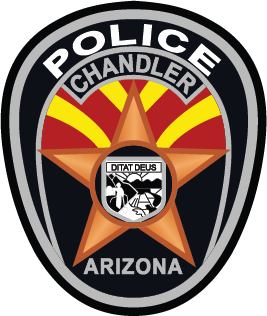Chandler Police Department Professional Staff
Search Jobs NowJoin our ranks Find a rewarding career.
The Chandler Police Department offers civilian professionals many career paths with law enforcement. Positions include Police Administrative Specialist, Records Specialist, Property & Evidence Technician, Crime Scene Technician, Forensic Scientists, Police Teleserve Specialist, Investigative Assistant, Victim Services Specialist, Planning & Research Analyst, Emergency Call Taker, Dispatcher and a variety of civilian coordinator, supervisor, and manager positions. If you are interested in serving our community, we encourage you to search our open jobs and submit an application!
What to expect Dispatcher Responsibilities.
A Police Dispatcher’s primary function is to answer emergency and non-emergency calls for service using a multi-line telephone and 911 systems. Responsibilities include receiving, processing, and dispatching calls for service, as well as providing information to personnel; it is vital that these duties are carried out quickly, efficiently, and accurately. This position is subject to shift work and must be able to work nights, weekends, and holidays as required.
Minimum Qualifications
Pay Range
What to expect Detention Officer.
Individuals in this classification will learn to perform the full scope of duties of a non-sworn Detention Officer through an academy and on the job training program. Duties include booking, fingerprinting, verifying identification, guarding and transporting persons in custody.
Applicants passing the background investigation will receive a conditional job offer. You will then be scheduled for a psychological exam, drug screen, and an interview with the Police Chief.
Minimum Qualifications
Pay Range
Work with Us Forensic Services.
From a Crime Scene Technician to a Forensic Scientist, our Forensic Services Section of the Chandler Police Department provides accurate and impartial scientific support to the Arizona Criminal Justice Community. If you are interested in this field, learn more here!
Forensic Disciplines
Crime Scene Response
Toxicology – Forensic Alcohol
Seized Drugs / Controlled Substance Analysis
Friction Ridge Comparison
Latent Print Processing
AFIS Ten-Print
Employment
Work with Us Police Technology.
Our Technology Section provides information technology support and maintaining a stable electronic work environment in coordination with the City of Chandler. The Technology Section collaborates to provide users with standardized tools and resources, support for efficient and effective system maintenance, standardized training and implementation and a strong foundation to maintain a technical architecture system. We are looking for individuals who support the mission of the Chandler Police Department and are geeked about helping our community whether that be supporting network infrastructure, mitigating against cyber-related threats, managing hardware and related technology-related police equipment, and providing application and desktop support.
Work with Us Records.
The Records Unit manages and processes police reports and related records. This unit validates the accuracy of information entered into state and national law enforcement databases, enters and clears warrants, runs criminal histories, notifies owners of stolen vehicle recoveries, images documents to police reports, and responds timely to requests for police reports and for police video from body worn cameras. This unit interacts with the public, answers and manages incoming calls, and helps visitors and clients when they come into the Police Department.
Work with Us Property & Evidence.
The Property and Evidence Unit receives, processes, stores, safeguards, and properly disposes items of property and/or evidence turned in by Police Officers. Disposition includes returning found items to individuals who have been properly identified as the owner. This unit interacts with the public, answers and manages incoming calls, and helps visitors and clients when they come to retrieve their items.
Work with Us Police Aide.
Chandler Police Department’s Police Aides are assigned to a patrol team to aid in responding to minor collisions and misdemeanor complaints. Police Aides work in a uniformed capacity, write reports, issue civil citations, and are expected to provide a high level of customer service to our citizens. Police Aides participate in annual proficiency training and take part in a four-week training academy. PA’s a required to be at least eighteen-years-old and possess either a high school diploma or GED. This full-time position comes with a 4/10 schedule and City benefits.
